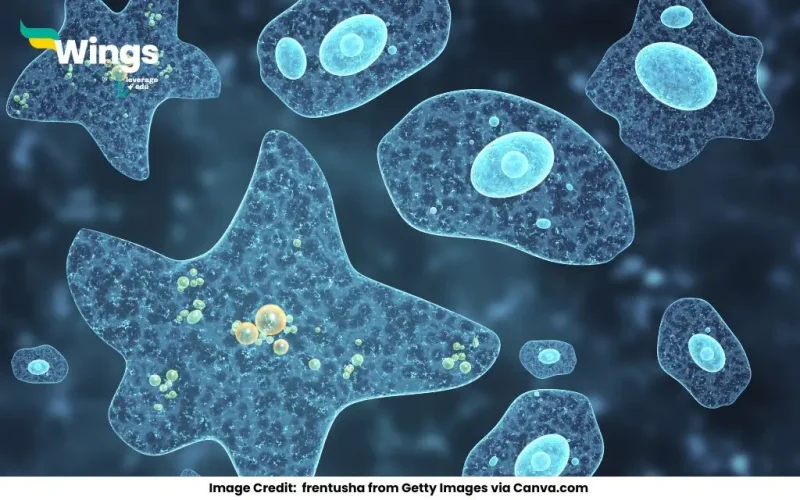Answer: The correct answer is D. Both A and C. Amoeba obtain its food through endocytosis, specifically a type of endocytosis called phagocytosis.
Amoeba is a unicellular organism that belongs to the kingdom Protista. It lacks a fixed shape and moves using pseudopodia, which are temporary projections of its cytoplasm. This characteristic also plays a crucial role in its feeding mechanism.
Complete Answer:
Biological Features of Amoeba
- Unicellular Structure: Amoeba consists of a single cell that performs all necessary life functions.
- Pseudopodia for Movement and Feeding: These extensions help the Amoeba move and capture food.
- Lack of a Fixed Shape: Amoeba constantly changes shape due to its flexible cell membrane.
- Reproduction: It reproduces asexually through binary fission, where one Amoeba divides into two identical daughter cells.
The Process of Phagocytosis (Cell Eating)
Amoeba consumes food particles, such as bacteria, algae, and small organic matter, through phagocytosis, a form of endocytosis. The process involves the following steps:
Detection of Food: When Amoeba senses food nearby, it extends its pseudopodia towards the food particle.
Engulfing the Food: The pseudopodia surround the food and enclose it within a food vacuole.
Digestion: Enzymes secreted into the vacuole break down the food into simpler substances.
Absorption and Assimilation: The digested nutrients are absorbed into the cytoplasm for energy and growth.
Excretion of Waste: Any undigested material is expelled out of the cell through exocytosis.
Studying Amoeba helps you to understand fundamental biological processes such as cellular digestion, movement, and asexual reproduction. It also provides insight into how simple organisms adapt and survive in various environments.
Common Doubts
 45,000+ students trusted us with their dreams. Take the first step today!
45,000+ students trusted us with their dreams. Take the first step today!


 One app for all your study abroad needs
One app for all your study abroad needs










